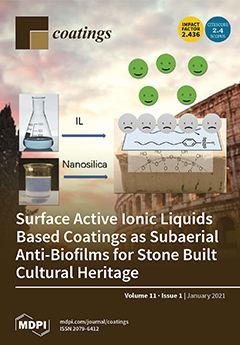Electron emission (EE) from real metal surfaces occurring during sliding contact with a polytetrafluoroethylene (PTFE) rider has been investigated using the thermodynamic data of metal oxides and the X-ray photoelectron spectroscopy (XPS) intensity ratio of oxygen/metal on the surfaces. EE was termed triboelectron emission (TriboEE). Rolled metal sheets of 18 types were used. The metal‒oxygen bond energy calculated from the heat of the formation of metal oxide, (
D(M–O)), was shown to be a key factor in dividing the EE into two routes, the so-called Schottky effect and the tunnel effect, due to the surface oxide layer. The metals in periodic groups 4 (Ti and Zr), 5 (V, Nb, and Ta), and 6 (Mo and W) maintained higher values of
D(M–O), while, moving down the groups, the TriboEE intensity increased, being ascribed to the former route. In groups 10 (Ni, Pd, and Pt) and 11 (Cu, Ag, and Au), the
D(M–O) values decreased moving down the groups, but the TriboEE intensity increased significantly, which can be attributed to the latter route. Furthermore, with the increase in the electrical conductivity of metals, the TriboEE intensity became remarkably high, while the
D(M–O) value fell rapidly and became almost constant. The XPS results showed that the dependence of the
D(M–O) and XPS metal core intensity on the O1s intensity and the XPS intensity ratio of the O1s/metal core was different between groups 10 and 11 and groups 4, 5, and 6. It was concluded that, under the electric field caused on the real metal surface by the friction with PTFE, the electron from metals with small
D(M–O) values predominantly tunnels the surface oxide layer as a surface barrier, while with large
D(M–O) values, the electron passes over the top of the barrier.
Full article





